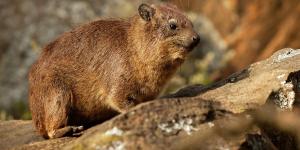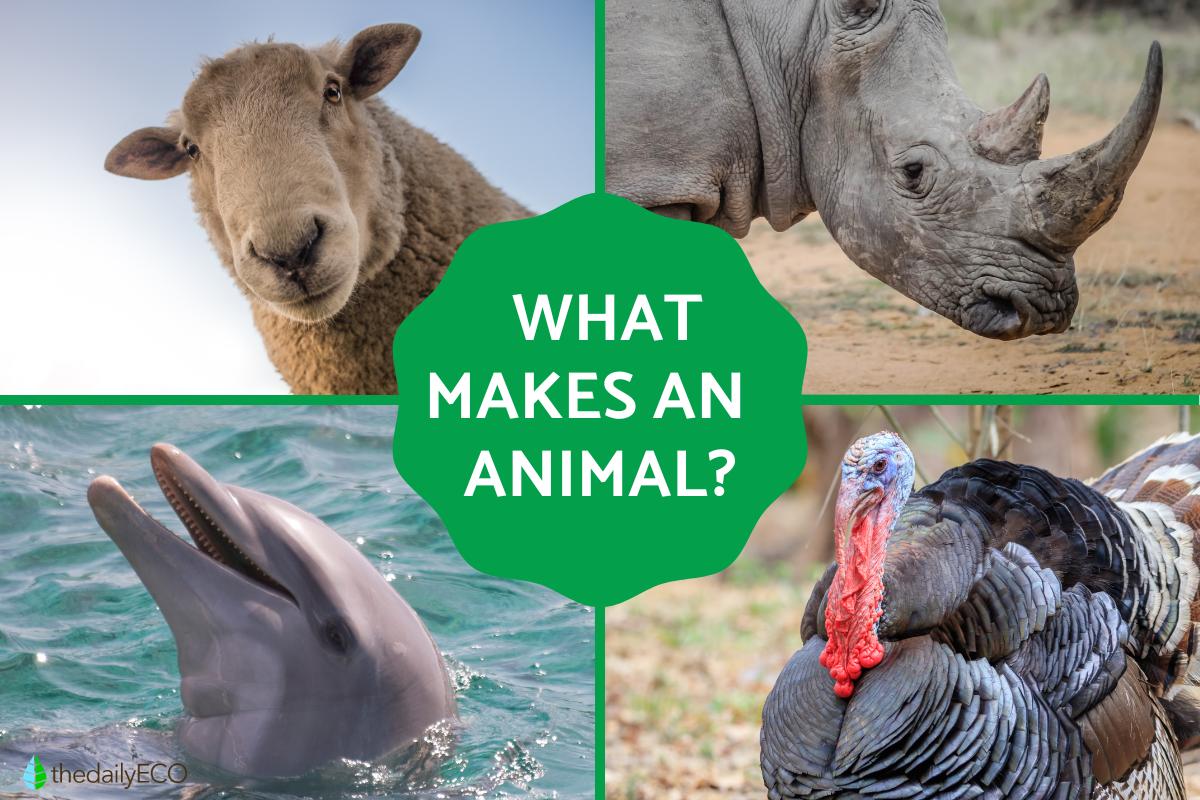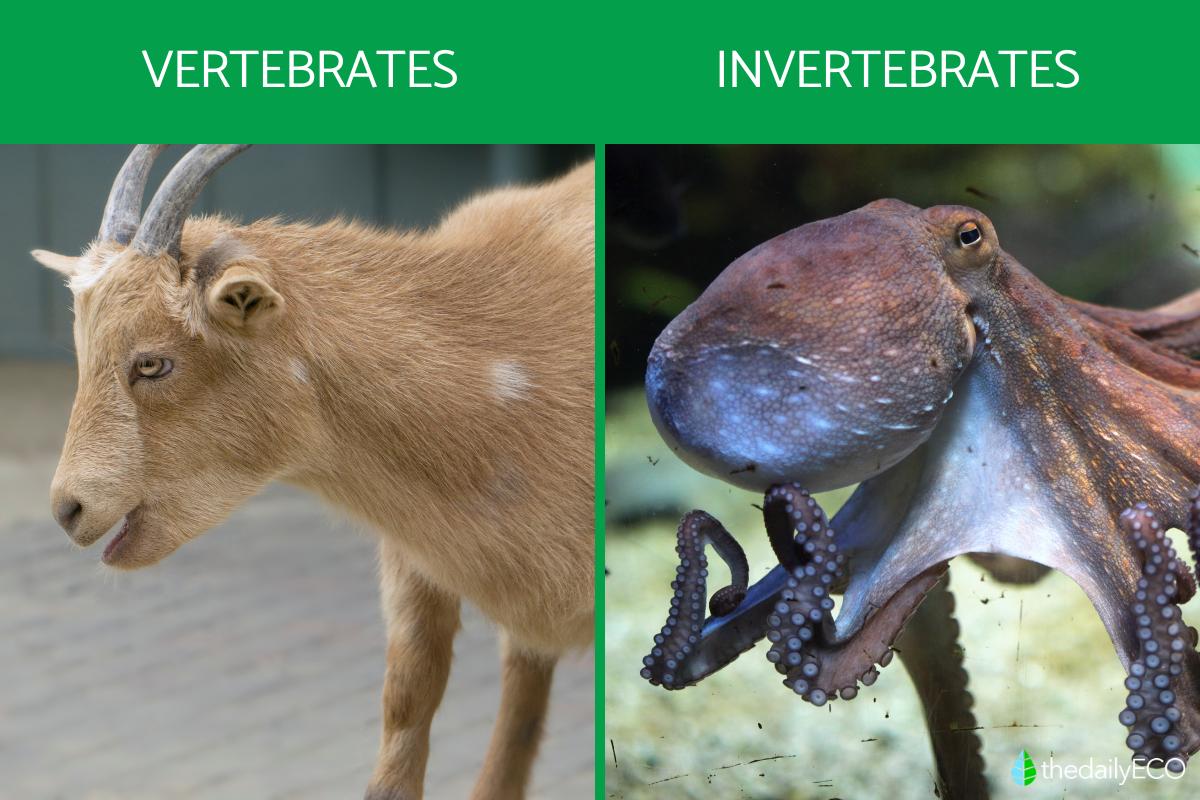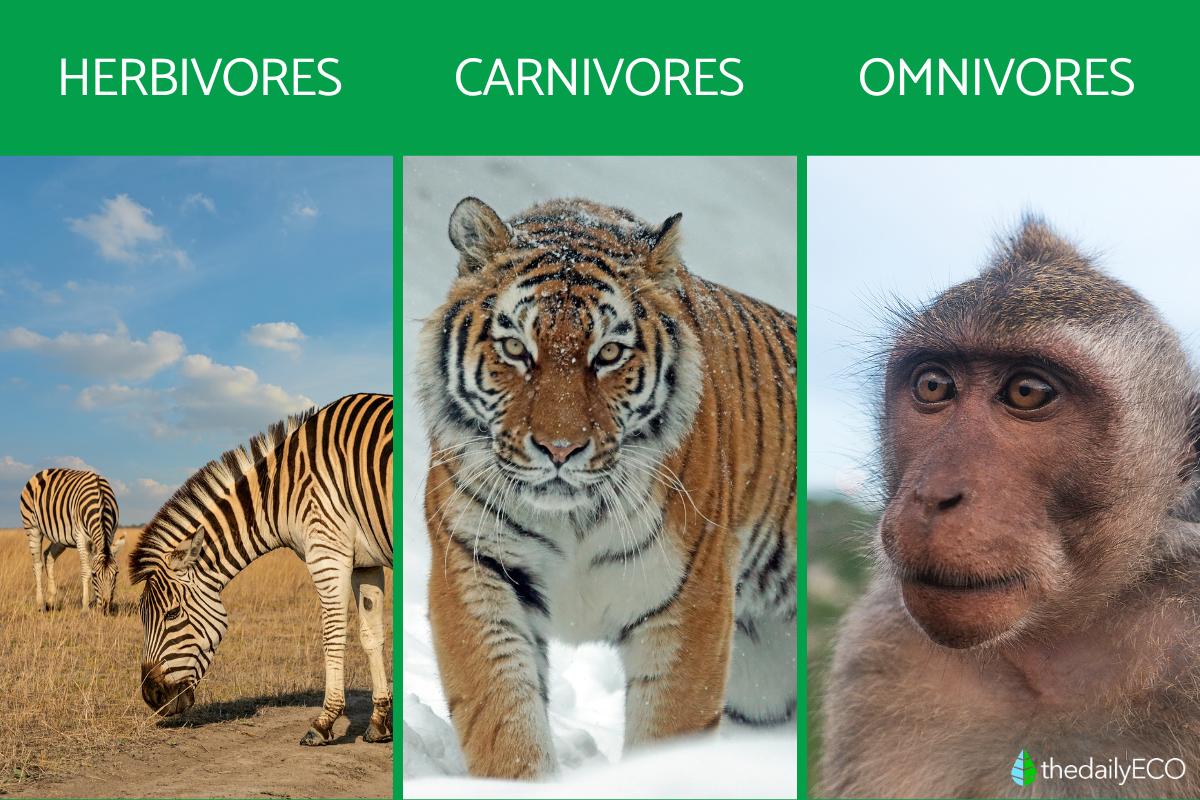What Makes an Animal?


Animals, a diverse group of living organisms, play a vital role in ecosystems worldwide. But what exactly makes an organism an animal? Animals, scientifically known as members of the kingdom Animalia, are defined by certain key characteristics that distinguish them from other life forms. Beyond these general traits, animals are further classified into different groups based on shared physical and genetic characteristics, such as body structure, reproductive methods, and developmental stages. Understanding what defines an animal and how they are categorized offers valuable insight into the biodiversity that sustains life on Earth.
In the following article by thedailyECO, we will explore what defines an animal, their key characteristics, and the various methods used to classify them.
- What classifies as an animal?
- How are animals classified?
- Classification of animals based on their spinal structure
- Classification of animals based on their dietary habits
- Classification of animals based on their habitats
- Classification of animals based on their reproduction strategies
- Classification of animals according to their habits
What classifies as an animal?
To classify an organism scientifically as an animal, we must consider several key characteristics at various levels, including cellular (the structure of cells), morphological (the form and structure of the organism), and physiological (how the organism functions) levels. While there isn't a single, concise definition for animals, we can outline the main traits that define them.
- Multicellular: animals are made up of many cells, as opposed to unicellular organisms (which consist of a single cell), such as bacteria. Being multicellular allows for greater complexity, enabling the formation of specialized structures and systems that perform different functions within the organism.
- Heterotrophic: Animals are classified as heterotrophs, meaning they cannot produce their own food. Instead, they obtain nutrients by consuming other organisms, including plants, fungi, and other animals. This dietary requirement is essential for providing energy and supporting their biological processes.
- Lack of cell walls: unlike plants and fungi, which have rigid cell walls that provide structural support, animal cells are surrounded only by flexible cell membranes. This lack of a rigid structure allows animal cells to change shape and move, facilitating various functions such as movement and interaction with the environment.
- Nervous system: most animals possess a nervous system, a complex network of cells (neurons) that transmit signals throughout the body. This system enables animals to respond quickly to external stimuli, such as danger, food sources, or environmental changes. The development of a nervous system is a significant evolutionary advancement that allows for coordinated movement and behavior.
- Tissue organization: animal cells are organized into specialized groups called tissues, which are collections of similar cells that work together to perform a specific function. For example, muscle tissue enables movement, while nervous tissue facilitates communication within the body. Tissues can further organize into organs (like the heart or liver) and organ systems (like the digestive system), allowing for complex functions essential for survival.
- Blastula formation: during embryonic development, animals go through a stage called the blastula, which is a hollow sphere of cells formed after fertilization. This stage is crucial in the development of animals as it leads to further differentiation and the formation of various tissues and organs.
- Aerobic respiration: most animals undergo aerobic respiration, which requires oxygen to convert substrates (like glucose) into energy (ATP). This process is essential for cellular metabolism and energy production.
- Active behavior and instincts: animals exhibit active behaviors driven by instincts. These behaviors often relate to survival, such as seeking food, avoiding predators, or finding mates. Animals utilize their sense organs (e.g., eyes for vision, ears for hearing) to perceive their environment, influencing their actions as predators or prey.
The first animals are believed to have evolved in the oceans during the Cambrian period, approximately 525 million years ago. This period is known as the Cambrian Explosion, a significant event in evolutionary history characterized by a rapid diversification of life forms in the ocean. During this time, many major groups of animals, including ancestors of modern species, began to emerge.
How are animals classified?
The Animal Kingdom (Animalia) is one of the most diverse and evolutionarily advanced groups of organisms. It encompasses a vast array of species, ranging from simple sponges to complex mammals.
To classify animals, scientists use a hierarchical system known as the taxonomic hierarchy. This system organizes organisms into increasingly specific categories:
- Domain: the highest level. Animals belong to the Eukarya domain, which includes organisms with eukaryotic cells.
- Kingdom: the second highest level. Animals are classified under the Kingdom Animalia.
- Phylum: a grouping based on major body plans. Examples include Chordata (animals with a notochord) and Arthropoda (invertebrates with exoskeletons).
- Class:a subdivision of a phylum. Examples include Mammalia (mammals) and Aves (birds).
- Order: a grouping of related families. Examples include Carnivora (carnivores) and Primates.
- Family: a more specific classification. Examples include Felidae (cats) and Hominidae (great apes).
- Genus: a group of closely related species. Examples include Panthera (big cats) and Homo (humans).
- Species: the most specific level. A group of individuals that can interbreed.
Most animals are invertebrates, lacking a backbone. Examples include insects, arachnids, and mollusks. A smaller group, chordates, have a backbone. This group includes mammals, birds, reptiles, amphibians, and fish.
While phylogenetic classification organizes animals based on evolutionary relationships, they can also be categorized using other criteria. These classifications provide insights into their behaviors, adaptations, and ecological roles.
Classification of animals based on their spinal structure
Animals can be broadly categorized based on the presence or absence of a vertebral structure. This fundamental division separates them into two primary groups: vertebrates and invertebrates.
Vertebrates:
Vertebrates are distinguished by the presence of a notochord, a flexible rod-like structure that develops into a vertebral column (backbone) in most species. The backbone provides support, protects the spinal cord, and enables complex movement.
In most vertebrates, the notochord is replaced by a vertebral column during development. This includes mammals, birds, reptiles, amphibians, and fish. However, in some animals, like tunicates, the notochord is present only during the embryonic stage and disappears as they mature. Cephalochordates, such as lancelets, retain the notochord throughout their lives, providing support without a vertebral column.
Invertebrates:
Invertebrates, the more diverse group, lack a backbone or notochord at any stage. They encompass a vast array of species, including:
- Porifera: sponges, simple organisms lacking true tissues.
- Cnidaria: jellyfish, corals, and sea anemones, with specialized stinging cells.
- Echinodermata: Starfish, sea urchins, and sea cucumbers, characterized by radial symmetry and a water vascular system.
- Nematoda: roundworms, often parasitic.
- Annelida: segmented worms, such as earthworms and leeches.
- Mollusca: snails, octopuses, clams, with soft bodies and often shells.
- Platyhelminthes: flatworms, including free-living and parasitic species.
- Arthropoda: the largest phylum, including insects, arachnids, crustaceans, with jointed appendages and exoskeletons.
While invertebrates lack a backbone, many have developed alternative structures for support and protection. The most notable is the exoskeleton, a hard outer covering. Arthropods, such as insects and crustaceans, shed their exoskeletons (molting) to grow.
Curious to know if crabs have a backbone? Dive deeper into the world of invertebrates in our related article.

Classification of animals based on their dietary habits
Animals can be categorized according to their dietary habits into three primary groups: herbivores, carnivores, and omnivores. While this classification is informative and useful for understanding animal behavior and ecology, it does not always indicate their evolutionary relationships.
Examining animals based on their diets offers valuable insights into their ecological roles and the dynamics of food webs. Each dietary group has developed unique adaptations that enable them to efficiently obtain and utilize their food sources, thus playing crucial roles in their ecosystems.
Herbivores
Herbivores primarily consume plants. They can be further classified based on their specific plant preferences:
- Frugivores: eat fruits (e.g., bats, primates)
- Folivores: eat leaves (e.g., sloths, koalas)
- Granivores: eat seeds and grains (e.g., rodents, birds)
- Xylophagous: eat wood (e.g., termites)
- Pollinivores: eat pollen (e.g., bees)
Herbivores have specialized digestive systems adapted to break down tough plant fibers.
Carnivores
Carnivores primarily consume other animals. They can be divided into:
- Active predators: hunt and kill prey (e.g., lions, hawks)
- Scavengers: feed on dead animals (e.g., vultures)
Carnivores have adaptations for hunting, such as sharp teeth, powerful limbs, and acute senses.
While the order Carnivora includes many carnivores, not all carnivorous animals belong to it. For example, eagles are carnivorous but not in the order Carnivora.
Omnivores
Omnivores consume both plants and animals. This flexibility allows them to adapt to changing environments.
It's important to note that these categories are not always strict, and some animals may have more varied diets or even change their diets based on their environment. Additionally, some animals may be considered primarily herbivorous or carnivorous, but they may occasionally consume small amounts of the other type of food.
Ever wondered which animals rely on fish for survival? Discover some fascinating examples in our deep dive into piscivores.

Classification of animals based on their habitats
Animals can be classified based on their primary habitat: terrestrial, aquatic, or air-terrestrial.
Terrestrial animals
Terrestrial animals, those that primarily inhabit land, have evolved various adaptations for survival on land. For example, the Equidae family, which includes horses, zebras, and donkeys, is well-adapted to grazing on grasses in grasslands and savannas.
The Cervidae family, encompassing deer, elk, and moose, is often found in forests, grasslands, and wetlands, where they feed on a variety of plant materials. Arachnids, such as spiders, scorpions, ticks, and mites, are primarily terrestrial and play crucial roles as predators or scavengers within their ecosystems.
Aquatic animals
Aquatic animals, those that live primarily in water, have adapted to life in various aquatic environments, including oceans, rivers, lakes, and ponds. Many aquatic animals depend on water for respiration, typically using gills to extract oxygen.
Additionally, some aquatic animals are filter feeders, obtaining food by filtering plankton and other small particles from the water. Sea sponges, for instance, use a unique system of cells called choanocytes to pump water in and out of their bodies, capturing plankton and microorganisms. Fish, another diverse group of aquatic animals, rely on gills to extract oxygen from the water and exhibit a wide range of adaptations for feeding, locomotion, and reproduction.
Air-terrestrial animals
Air-terrestrial animals, those that possess the ability to fly or glide but primarily rely on terrestrial habitats, have developed adaptations that allow them to exploit both aerial and terrestrial environments.
Birds, well-known for their ability to fly, have specific adaptations such as lightweight bones, feathers, and powerful flight muscles, which enable them to soar through the air. Insects, many of which can also fly, play essential roles in pollination, pest control, and serving as a food source for other animals. Some mammals, such as sugar gliders, have developed the ability to glide between trees, using a membrane (patagium) to efficiently move through their arboreal habitat.

Classification of animals based on their reproduction strategies
Reproduction is a fundamental aspect of animal life, and the strategies employed by different species vary significantly. There are three primary types: oviparity, viviparity, and ovoviviparity.
Oviparous
Oviparous animals lay eggs, which contain nutrients for developing embryos. Fertilization can be internal or external. Examples include fish, reptiles, amphibians, insects, birds, and monotremes (echidnas, platypus).
Viviparous
Viviparous animals develop their young internally, nourished by the mother. Fertilization is always internal. This strategy allows for live birth of fully developed young. While most mammals are viviparous, marsupials like kangaroos and koalas develop their young in a pouch after birth.
Ovoviviparous
Ovoviviparous animals retain eggs internally until hatching. However, the embryos rely on the yolk within the egg for nourishment, not the mother. Examples include sharks, some reptiles, and certain invertebrates.
If you're intrigued by the diversity of reproduction strategies, you'll want to dive into our article on creatures that reproduce asexually.

Classification of animals according to their habits
Sunlight significantly influences animal behavior, shaping their daily activity patterns. Animals can be broadly categorized as diurnal or nocturnal.
Diurnal animals
Diurnal animals are active during the day, relying on sunlight for their activities.
Vision is the primary sense used by diurnal animals, allowing them to navigate and interact with their environment effectively. Examples include hominids (humans, apes), birds, bovids (cattle, sheep, goats), canids (dogs, wolves), and insects like butterflies and bees.
Nocturnal animals
Nocturnal animals, on the other hand, are active at night. This behavior can serve several purposes, including avoiding the heat of the day, reducing competition for food, or evading predators.
Nocturnal animals typically rely on senses other than sight, such as hearing and smell, to navigate and hunt in low-light conditions. Examples include bats, owls, foxes, nocturnal moths, and fireflies. Bats, in particular, are known for their echolocation abilities, which allow them to navigate and hunt in the dark.

If you want to read similar articles to What Makes an Animal?, we recommend you visit our Wild animals category.










